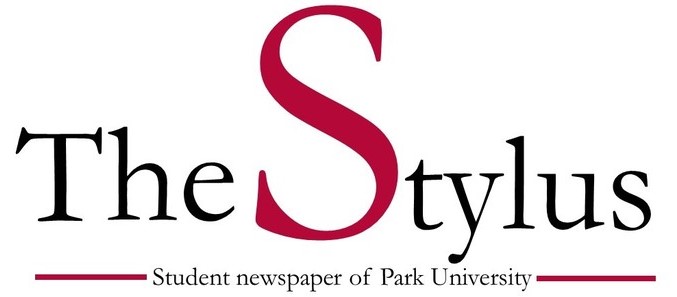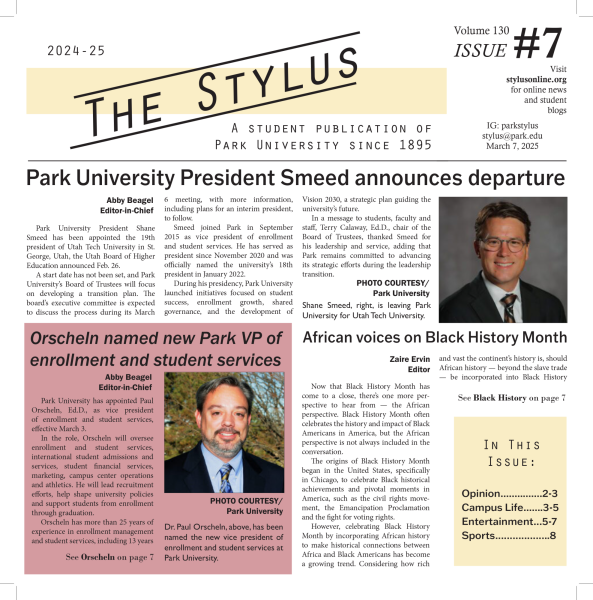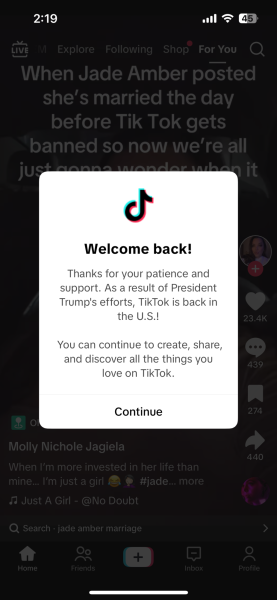First Amendment debate: college students voice their opinions on hate speech
Park University is known for many core values, and one of the most crucial, according to the administration, is the value of diversity. At Park, that value of diversity has included accepting those from places all over the world as well as respecting self-expression.
College students should feel comfortable expressing themselves on campus. However, the university is responsible for keeping certain acts of expression under control.
The First Amendment has been a hot topic of discussion on college campuses over the last year. A prime example has been the “alt-right” commentator Milo Yiannopoulos’ appearances at several college campuses – most notably at UC-Berkeley – or the recent incident at the University of Florida with white nationalist Richard Spencer. In every case, there is a group of students who either want the speaker to be there or at least believe they have a right to speak under the First Amendment, while another group condemns the content of their message and argues they should not be given the space to appear on campus.
This debate of what is and is not protected by the constitutional amendment is the center of attention. So what does the Park University community think about the First Amendment and its protections? Drawing inspiration from a survey that spiked national attention, done by John Villasenor of the Brookings Institute, I asked people around campus questions about free speech and what the First Amendment protects.
Every survey has to start with one or two base questions – this one asked gender and age. These are important to collect in order to show, if any, strong differences in opinion split along gender or age lines. Villasenor used gender and political affiliation in his study, as well as whether the institution student’s attended was private or public. Since Park is a private institution, that was not a part of this survey. Political affiliation was omitted.
52% of the surveyed group said that the First Amendment does, legally, protect hate speech. There were a lot of “buts” that followed their answer, however. That leaves 48% of the group thinking that hate speech is not protected. This is relatively similar to Villasenor’s research, which showed 44% of the respondents did not believe hate speech was protected.
Legally under the First Amendment, hate speech is protected. However, just because everyone has the legal right to speak their mind does not mean that it won’t or shouldn’t come with consequences. Every action has a reaction.
Men that were surveyed were more likely to believe that hate speech is constitutionally protected than women. Women’s responses tended to be more of an opinion as to whether it should or shouldn’t be protected. This was an issue with the survey, as a verbal response was often given along with the physical form.
Age did not seem to make a difference in the opinions of the polled group. However, there was not a large age range sampled. This is likely because the group consisted of students at Park, most of which fell in the age range of 18-23 years old.
One student said they believe that all speech and expression is covered by the First Amendment, no matter what.
“People are just too sensitive these days,” the student said.
This is an opinion some agreed with, while others were on the opposite end of the spectrum explaining that, “because we are all humans, we have a social responsibility to be respectful of one another while still being able to express ourselves.” Due to the topic and controversy, the students asked to not be named.
The issue of hate speech is not a new discussion on campuses; it has long been a topic among college students. Today, it is becoming more widespread because of the strong values and openness of opinions of the students. The specific societal issues and topics change throughout the years. Today it is based around violence.
The Brookings study showed that one-fifth of college age students believe that it is acceptable to be physically violent toward someone making an offensive or hurtful comment. In Villasenor’s study, he included the following scenario: “A public university invites a very controversial speaker to an on-campus event. The speaker is known for making offensive and hurtful statements.” The survey then added in two different resulting reactions by students, and asked the polled group how they felt about it.
The surveys showed that the use of violence was not okay to use toward the opposing speaker, but that coming back with offensive and hateful statements was somewhat okay. This results in colleges and universities limiting the range of speakers and guests invited to their campuses, in fear that the students may rebel if the topic of discussion is controversial.
The important and controversial side of the hate speech topic is not necessarily the spoken word, but the threat of or physical action of incitement violence. This is where the line is crossed. A threat to someone or a group of people is often the following of an offensive or hurtful statement.
This is where the controversy stands. The violence that is not prohibited nor encouraged by the constitution is a grey area.
The importance of knowing what is constitutionally covered by the amendments is important. The range of protection from the First Amendment should be discussed and debated, that is a sign of intellectual intelligence. College students should be aware of their rights and exercise them responsibly. As one student said, “there is a way to handle this debate peacefully without being disrespectful of another’s opinion.”
Your donation will support the student journalists of Park University. Your contribution will allow us to cover our annual website hosting costs, freeing up other funds for equipment, printing and training.





